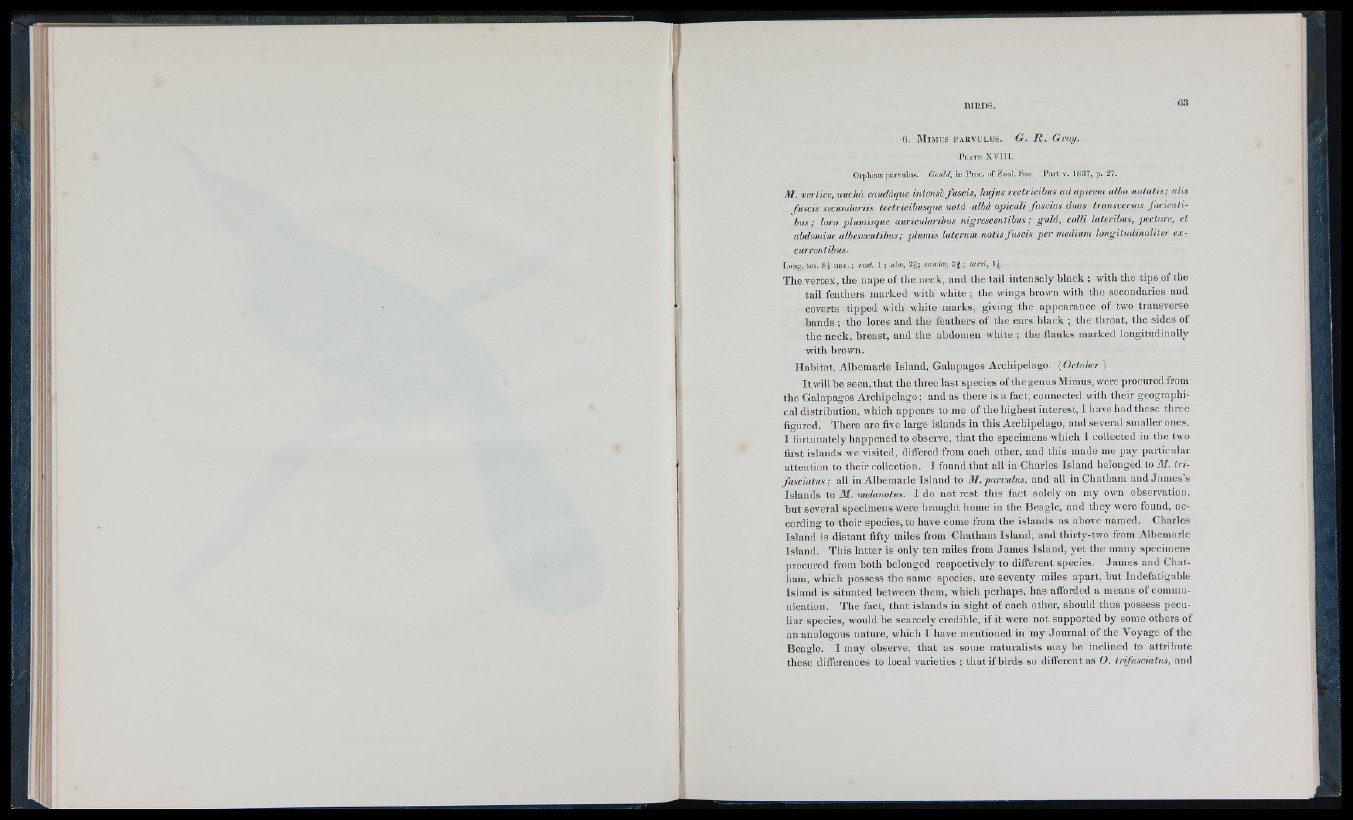
6 . M im u s p a r v u l u s . G. R . Gray.
P l a t e X V I I L
Orpliciis parvulus. Gould, in Proc. of Zool. Soc. P a rt v. 1837, p. 27.
M. ver lice, nuchd caudâque intensé fuscis, hujus rectricibus ad apicem albo notatis; alis
fuscis secundariis tectricibusque notâ albâ apicali fascias duas transversas facienti-
bus ; loro plumisque auricularibus nigrescentibus ; guld, colli lateribus, pectore, et
abdomine albesceutihus ; plumis laterum notis fuscis per medium longitudinalitcr ex-
currentihus.
Long. tot. unc. ; rost. 1 ; aloe, 3 |; caudæ, 3 | ; tarsi, I | .
Tlie vertex, the nape of the ueck, and the tail intensely black ; with tbe tips of the
tail feathers marked with white ; the wings brown with the secondaries and
coverts tipped with white marks, giving the appearance of two transverse
bands ; the lores and the feathers of the ears black ; the throat, the sides of
the neck, breast, and the abdomen white ; the flanks marked longitudinally
with brown.
Habitat, Albemarle Island, Galapagos Archipelago. {October.)
Itwillbe seen, that the three last species of thegenus Mimus, were procured from
the Galapagos Archipelago ; and as there is a fact, connected witli their geographical
distribution, whicli appears to me of the highest interest, I have had these three
figured. There are five large islands in this Archipelago, and several smaller ones.
I fortunately happened to observe, that the specimens which I collected in the two
first islands we visited, differed from each other, and this made me pay particular
attention to their collection. I found that all in Charles Island belonged to M. Iri-
faseiatus ; all in Albemarle Island to 31. parvulus, and all in Chatham and James's
Islands to 31. melanotus. I do not rest this fact solely on my own observation,
but several specimens were brought home in the Beagle, and they were found, according
to their species, to have come from the islands as above named. Charles
Island is distant fifty miles from Chatham Island, and thirty-two from Albemarle
Island. This latter is only ten miles from James Island, yet tlie many specimens
procured from both belonged respectively to différent species. James and Chatham,
which possess the same species, are seventy miles apart, but Indefatigable
Island is situated between them, which perhaps, has afforded a means of communication.
The fact, that islands in sight of each other, should thus possess peculiar
species, would be scarcely credible, if it were not supported by some others of
an analogous nature, which I have mentioned in my Journal of the Voyage of the
Beagle. I may obseiwe, that as some naturalists may be inclined to attribute
these differences to local varieties ; that if birds so different as O. Irfasciatus, and